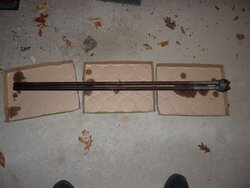I have an oil burner (Beckett), forced air furnace (Lennox) that is not getting oil from the tank. The furnace is in attic and the tank is in the garage so there is 8 foot lift. This furnace has worked well for about 17 years. I have done the annual maintenance for the last 12 years.
I have replaced a few things but it still does not work. I am wondering if anybody has an idea of what could be the problem or what I may be missing.
Here is a list of things I have done so far:
- Replaced nozzle, and filter and checked electrodes and cleaned.
- Replaced oil pump with new pump.
- Checked coupler, looks good, not chewed up.
- Replaced gun line
- Ran new 3/8" OD copper pipe from furnace to tank, 60 feet.
- Checked suction tube inside of tank for leaks.
When I turn on the furnace and attempt to bleed it, no fuel.
Unfortunately, I do not have a pressure gauge or a vacuum gauge to test. I wonder if the new pump is bad. I can hear the pump working but no oil.
What am I missing? Any insights would be greatly appreciated.
Also, I hate to admit defeat but does anybody on Long Island know a good oil furnace tech or service?
Thanks, in advance.
CW
I have replaced a few things but it still does not work. I am wondering if anybody has an idea of what could be the problem or what I may be missing.
Here is a list of things I have done so far:
- Replaced nozzle, and filter and checked electrodes and cleaned.
- Replaced oil pump with new pump.
- Checked coupler, looks good, not chewed up.
- Replaced gun line
- Ran new 3/8" OD copper pipe from furnace to tank, 60 feet.
- Checked suction tube inside of tank for leaks.
When I turn on the furnace and attempt to bleed it, no fuel.
Unfortunately, I do not have a pressure gauge or a vacuum gauge to test. I wonder if the new pump is bad. I can hear the pump working but no oil.
What am I missing? Any insights would be greatly appreciated.
Also, I hate to admit defeat but does anybody on Long Island know a good oil furnace tech or service?
Thanks, in advance.
CW



 Love those movies!
Love those movies!